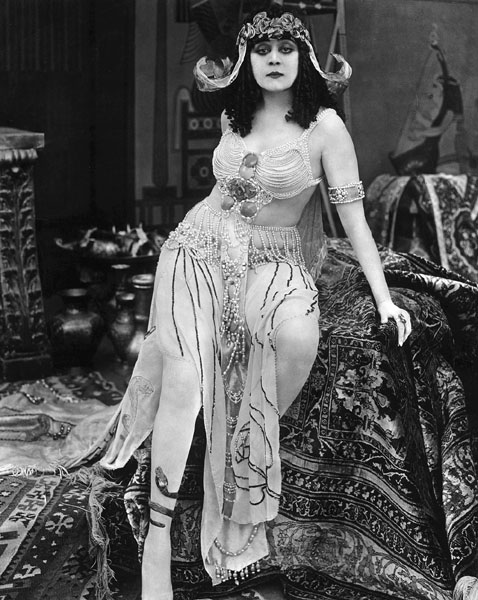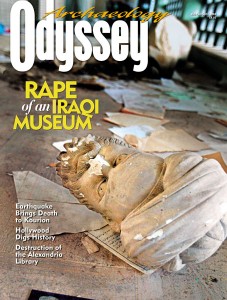We can only guess what Cleopatra (r. 52–30 B.C.) actually looked like. A bust of the Ptolemaic queen in the Vatican Museum, the only known statue of her to survive from antiquity, is missing its nose. One bronze coin minted in Alexandria, however, depicts a confident young woman whose prominent nose projects a sense of power—reminding us of the 17th-century French philosopher Blaise Pascal’s observation: “If Cleopatra’s nose were shorter, the shape of the world would have been different.”

Hollywood filmmakers have indeed given us Cleopatras with shorter noses—and plenty of sizzle. As early as 1917, Theda Bara (actually Theodosia Goodman, a Jewish girl from Avondale, Ohio) re-invented Cleopatra’s dangerous sexuality in the silent film Cleopatra. With revealing costumes designed to showcase her voluptuous figure and smoky bedroom eyes, Bara’s Cleopatra (above) inflamed the audience’s wildest fantasies as she seduced her Roman lovers. The first “sex symbol” created by the nascent film industry, she arrived for press conferences in a gleaming white limousine attended by “Nubian” footmen.
Already a library member? Log in here.
Institution user? Log in with your IP address.

